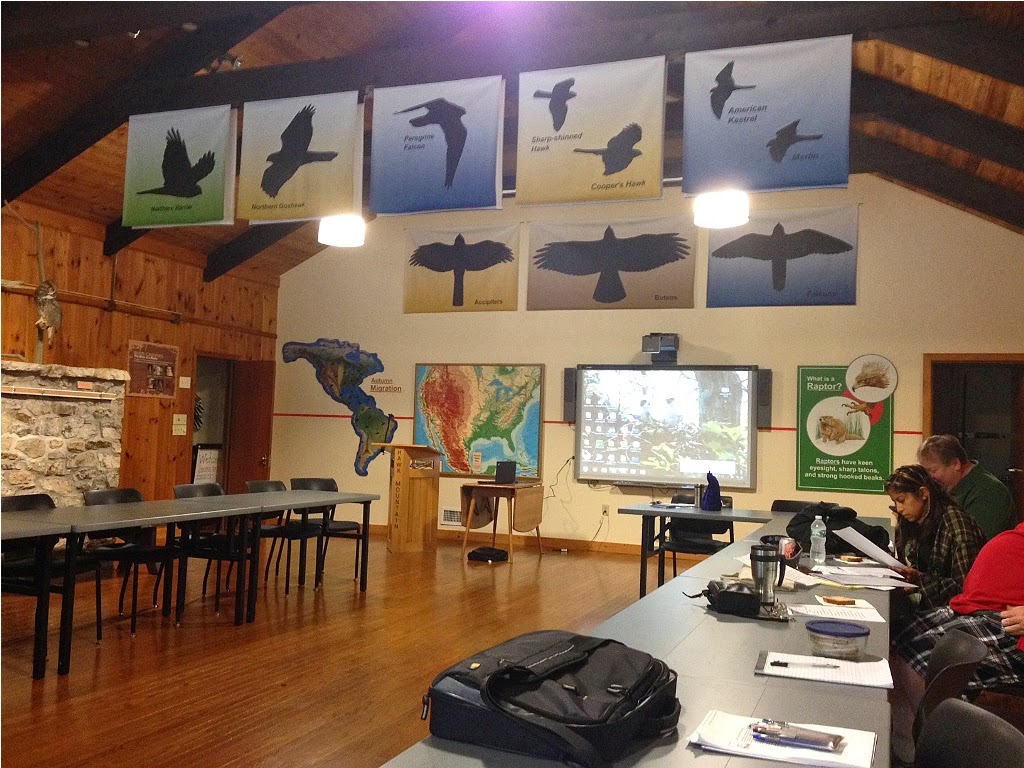This past Saturday I once again had the pleasure of attending the Kittatinny Roundtable at Hawk Mountain Sanctuary. The annual event is hosted by Laurie Goodrich, the senior monitoring biologist there, who is also the vice-chair of the Hawk Migration Association of North America (HMANA).
At HMANA’s chair, I was called on to say a few words about what HMANA is up to and what we are planning. About 20 people, mostly hawk counters and site leaders from hawkwatches in Pennsylvania and New Jersey, attended. Rich Conroy, a HMANA board member from Philadelphia’s Militia Hill Hawkwatch, also attended.
We got to hear about geographical changes to the American Kestrel’s range. The species is generally declining due to habitat loss but in a few areas is increasing. Nick Bolgiano has been studying this and gave a brief overview of what his research has found so far. Loss of farmland and farming practices seems to drive this decline.
Laurie reported on her Broad-winged Hawk monitoring program, which involves first catching and then radio-tagging several adult and juvenile birds. She wants to see where the Pennsylvania Broadwings winter and where and how they migrate.
A highlight of the event for me is studying the hawk results from the previous season. We discovered that nearly every site reporting tallied record low or near-record low counts of Northern Harrier in fall 2013, and we wondered if this is the next raptor species of concern. In fact, most other accipiter genus species were also counted in lower than average numbers. One year’s data is not enough to draw any conclusions, but it is enough to pay attention to and see what happens in the upcoming migration year.
The Kittatinny Roundtable is always a lot of fun, too. It’s not often that hawk counters gather—they are usually too busy counting hawks!






4 comments:
Interesting stuff Carolyn. Farming practices have a lot to answer for here too. Let's hope things will turn around before we lose these precious creatures.
Interesting. I'm not an official hawk counter, but it seems as if I see more of them. (Had a kestrel nest on the edge of my yard one year)
We've seen no American Kestrels in our preserve this year, and we usually have one or two pairs that nesting here. Our birders have commented on the absence.
Countryside: i think getting rid of hedgerows doesn't help either. Kestrels like those edge spots.
Post a Comment